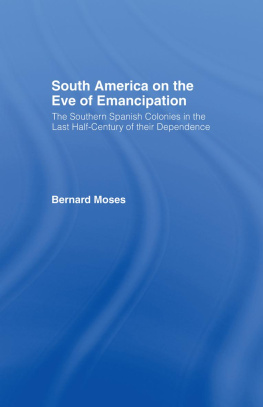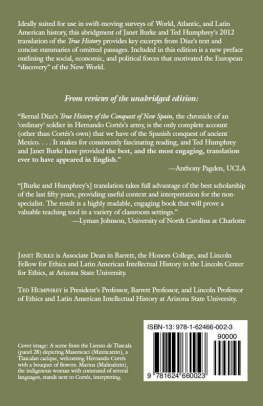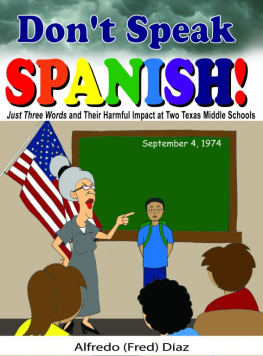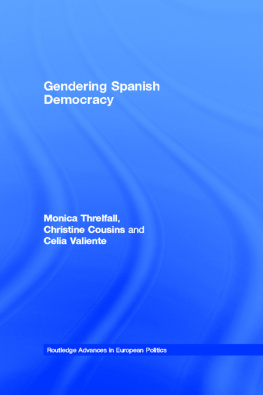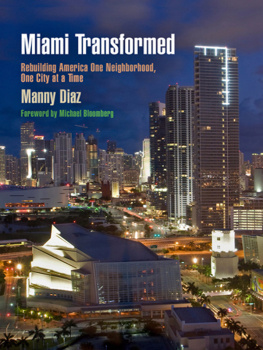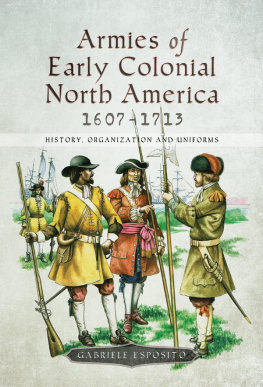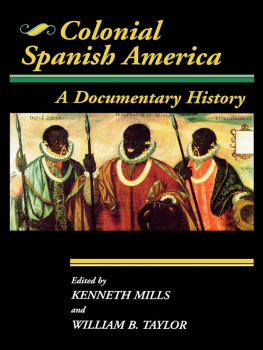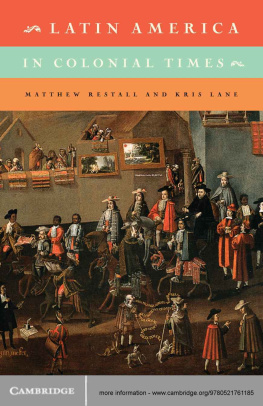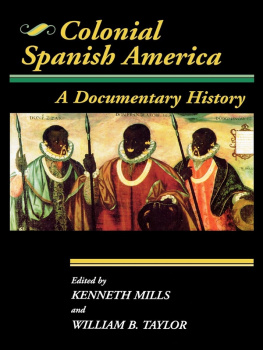To Be Indio in Colonial Spanish America
To Be Indio in Colonial Spanish America
EDITED BY MNICA DAZ
University of New Mexico Press|Albuquerque
2017 by the University of New Mexico Press
All rights reserved. Published 2017
Printed in the United States of America
222120191817123456
Library of Congress Cataloging-in-Publication Data
Names: Daz, Mnica, 1974 editor of compilation.
Title: To be indio in colonial Spanish America / edited by Mnica Daz.
Description: Albuquerque : University of New Mexico Press, [2017] | Includes bibliographical references and index.
Identifiers: LCCN 2016013655 (print) | LCCN 2016015683 (ebook) | ISBN 9780826357724 (cloth : alk. paper) | ISBN 9780826357731 (pbk. : alk. paper) | ISBN 9780826357748 (electronic)
Subjects: LCSH: IndiansEthnic identity. | Indians of MexicoEthnic identity. | Indians of South AmericaPeruEthnic identity. | Indians of MexicoHistory. | Indians of South AmericaPeruHistory. | CasteAmericaHistory. | IndiansMixed descent. | Indians, Treatment ofAmerica. | SpainColoniesAmericaIntellectual life. | SpainColoniesAmericaRace relations.
Classification: LCC E59.E75 T62 2017 (print) | LCC E59.E75 (ebook) | DDC 305.80097dc23
LC record available at https://lccn.loc.gov/2016013655
Paperback cover illustration: Alegora de las autoridades espaolas e indgenas, de Patrico Zuares de Pereo, 1809
Designed by Catherine Leonardo
Contents
Mnica Daz
Rolena Adorno
Nancy E. van Deusen
Rachel Sarah OToole
Tatiana Seijas
Amber Brian
Viviana Daz Balsera
Roco Quispe-Agnoli
Susan Schroeder
Pablo Garca Loaeza
Yanna Yannakakis
Acknowledgments
This volume would not have been possible without the keen interest and hard work that all contributors have demonstrated since the moment I talked to each of them regarding the possibility of writing on and discussing the topic of Indian identities in colonial Spanish America. I am grateful to each one of them for sharing with me their wisdom and their research and for taking part in this exciting adventure. Thank you all for your patience and support.
Most of the chapters in the volume stemmed from a one-day symposium held at Georgia State University in the fall of 2012, which was the beginning of a fruitful conversation on the subject that has continued to this day. I am indebted to the faculty at Georgia State University who supported that event, particularly Hctor Fernndez-LHoeste, Director of Latin American Studies; Carol Winkler, Associate Dean for the Humanities; and my former colleague in the Department of Modern and Classical Languages, Hugo Mndez. Thanks to the intercession of Yanna Yannakakis, the symposium also received the generous support of the Department of History at Emory University. My thanks also go to Karen Stolley for her enthusiastic encouragement.
I am also grateful to Pablo Garca and Viviana Daz Balsera who, even though they could not participate in the dialogue that took place in Atlanta in 2012, were nonetheless eager to join the discussion and contribute to this volume, doing so in a remarkable way. Nancy van Deusen also deserves special thanks for her support when an additional chapter was needed. She not only offered smart feedback on the introduction, but she was also willing to go the extra mile by ensuring that her chapter was included in this volume. Thanks to all the students in the graduate class that I taught at the University of Kentucky in the fall of 2014 on the subject of Indian identities, and especially to Joshua Martin, who proofread the introduction to this volume and offered extremely helpful comments. I am also grateful to the two anonymous reviewers from the University of New Mexico Press who offered sharp and relevant comments that helped improve the arguments presented in all of the chapters of the book. I would also like to extend my gratitude to Clark Whitehorn, executive editor at the University of New Mexico Press, for making the publishing process a smooth and easy one. Finally, I want to offer a special thanks to my two unconditional supporters, Amber Brian and Yanna Yannakakis, who are not only brilliant scholars but also supportive colleagues and the most fun amigas anybody could ask for. This volume is yours, too.
INTRODUCTION
Indio Identities in Colonial Spanish America
Mnica Daz
T he processes of conquest and colonization of the natives of the Americas altered their individual and communal ways of identification. Intended to homogenize cultural diversity, the misnomer indio (Indian) fostered a new collective identity that various groups of people interpreted and used in different ways. As indios these individuals performed and articulated identities that in some respects responded to what colonial officials expected, but they also shaped the meanings of Indian identity through processes of negotiation and accommodation. The imposition of social, legal, and cultural categories over a vast and heterogeneous population created new forms of identification throughout the Americas for as long as European presence remained.
This volume explores some of the identities that indigenous peoples forged through their engagement with colonial society and institutions while also highlighting the contexts and purposes for which these individuals drew recourse to such identities. By reading and analyzing native historiographies in conjunction with archival documentation, the contributors to the present volume reveal the diversity of strategies that native peoples used to negotiate the European presence in their territories. In doing so Amerindians bridged native and Spanish cultures, thereby shaping both indigenous identities and the colonial society in which they lived.
At the core of the processes of identity formation lies the sociopolitical organization of the colonial system that separated Spaniards and castas (mixed-race people), on the one hand, and natives, on the other, into two Particularly in the case of urban centers, the legal category of indio proved useful for administrative purposes and with time came to operate as an identity marker that surpassed ethnic differences and created cohesion and solidarity (Castro Gutirrez 2010, 25).
The scholarship produced in the past thirty years regarding native peoples has advanced a more nuanced understanding of the Amerindian encounters with European cultures; however, scholars continue to privilege, for the most part, a paradigm that centers upon the oppositional binary of indio versus European. Scholarly debates have departed from essentializing that binary, yet we continue to center our discussions on the negotiations that took place between the cultural elements of the two main groups. Furthermore, there is an acute interest in identifying the authentic native features that survived native coexistence with Europeans under colonial rule. Still others have sought to determine which elements of European culture were adopted by natives so as to ultimately understand for what purposes such appropriations took place and with what results.
The work on Guamn Poma de Ayala by Rolena Adorno, for example, has proven instrumental in shifting our attention to the agency of indigenous peoples under colonial rule in addition to highlighting the hybrid identity of the indio ladinoa native who learned Spanish and functioned as an intermediary between the two worlds (1986, 1988, 1991, 1994). These and other similar studies have underscored how the asymmetries of colonial power and the unequal experiences of colonial rule prevented indios ladinos from becoming a homogeneous group (Adorno 1991, 233). Within this framework there existed many possibilities and overlapping forms of identification. Indios ladinos displayed varying degrees of European cultural traits, and in doing so they moved in different spheres of the colonial world and with diverse motives.






